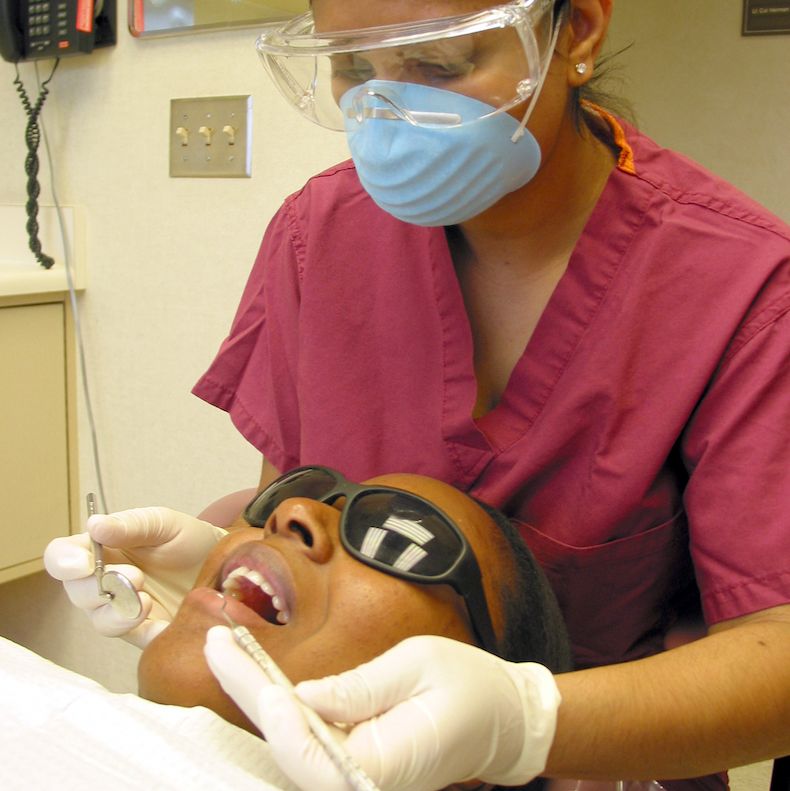- Best Practices New Normal
- Digital Dentistry
- Data Security
- Implants
- Catapult Education
- COVID-19
- Digital Imaging
- Laser Dentistry
- Restorative Dentistry
- Cosmetic Dentistry
- Periodontics
- Oral Care
- Evaluating Dental Materials
- Cement and Adhesives
- Equipment & Supplies
- Ergonomics
- Products
- Dentures
- Infection Control
- Orthodontics
- Technology
- Techniques
- Materials
- Emerging Research
- Pediatric Dentistry
- Endodontics
- Oral-Systemic Health
The Multiple Benefits of Easing Patient Fears
Easing patient fears of dental visits is of primary importance for all practices. If patients are fearful and those fears lead to canceled appointments, that results in a loss of revenue - not to mention a disruption to the practice schedule. But by slowly acclimating patients to the practice environment, dentists and their staff can ease fears and build a solid level of trust with their clientele.

"We in dentistry can help our patients overcome their fear of the dentist," Leena Paloma, DDS.
Most people know at least one person who has a fear of going to the dentist. That’s because it’s estimated that as much as 15 percent of Americans, or approximately 40 million people, avoid seeing the dentist due to anxiety and fear.
As an oral health practitioner, chances are you’ve seen your share of these patients. Helping them to overcome their fears is a priority for every dental practice. And according to Leena Palomo, DDS, MSD, Associate Professor of Periodontics and director of the undergraduate DMD program in periodontics at Case Western Reserve University, there is reason for optimism.
“Research shows that fears, even phobias, can be overcome,” Palomo says. “Incredible fears—fear of snakes, of heights, or speaking in public—all of these can be overcome. We in dentistry can help our patients overcome their fear of the dentist.”
Doing so benefits both the patient as well as the practice.
INCREMENTAL STEPS
Palomo says that easing patient fears is “so much a part of dentistry” that it is woven into the fabric of Case Western’s curriculum. And the most reliable way to make patients comfortable is to slowly acclimate them to the different treatments they will require.
“Initial visits are just about getting to know the patient; getting to know their health history,” Palomo says. “We need that health history. But it also gets the patient more relaxed and acclimated to that environment with the caregivers.”
Part of that initial conversation is broaching the topic of possible bad experiences the patient may have previously had, which could be at the core of their nervousness. For example, if the patient’s blood pressure is taken during the initial visit and it’s elevated, ask them, “Is your blood pressure always elevated?” That opens a conversation not only about hypertension history, but also about their history of sitting in a dentist’s chair.
“Very often, if that initial blood pressure reading is high, we may take it two or three more times during the same visit and see if their blood pressure actually drops during the same visit as the patient becomes more acclimated to the environment,” Palomo says. “And, as the level of trust between the caregiver and the patient starts to become a foundation.”
Then you’re able to build on that foundation.
EDUCATION COMPONENT
Palomo says that because fear often develops from the unknown, it is important to help patients understand the ‘why’ and ‘how’ elements of their treatment plan. Some dental offices have a treatment coordinator who engages the patient in that conversation. As such, staff plays an enormous role in helping allay patient fears.
For example, after becoming acclimated to the dental environment, the patient may need complicated therapy. Palomo recommends beginning with a less complicated therapy — maybe staging a visit with the hygienist before jumping into a more invasive treatment.
But when it comes to easing patient fears, everyone plays a part including the front desk receptionist.
“There’s a level of trust between the first face in the dental office that the patient sees, and the patient,” Palomo says. “And over time that first face gets to know the patient and a lot about their family.”
Imagine a patient has been coming to the practice for 20 years. It’s likely the front desk receptionist, through conversations with the patient, has ‘watched’ the patient’s children grow up. And now the eldest is heading off to college, leaving the patient feeling stressed. That information could be conveyed to the dentist.
“Research more and more clearly elucidates the oral and systemic link,” Palomo says. “If you see signs of stress, look for poor self-care. This person, in going through a stressful time, might be neglecting themselves to care for an elderly parent.”
WATCH FOR PATTERNS
Fearful patients can be notorious for cancelling appointments. But Palomo says patients don’t usually announce that they are cancelling an appointment because they are scared. More likely, in a phone conversation with a staff member, they will explain that they’re scared, but they do intend to keep their appointment this time.
“That opens the door for the staff member who makes phone calls scheduling patients to have that conversation about the steps we take to overcome their phobia, and ease the patient into treatment,” Palomo says. “How the first visit will just be talking. And the second might just be x-rays, or might just be hygiene. Then we wade deeper and deeper into facing that phobia.”
Which not only benefits patients, but a practice’s bottom line as well.
“Huge,” says Palomo when asked if easing patient fears can impact a practice financially. “The better the clinician’s chair side manner, the better that center’s overall performance.”
Click here to sign up for more Dentist's Money Digest content and updates.RELATED: More Coverage on
- New Guide May Help Your Young Patients Conquer Dental Fear
- Genes Might Be to Blame for Fear of the Dentist
- Women Expect, Tolerate More Pain at the Dentist
